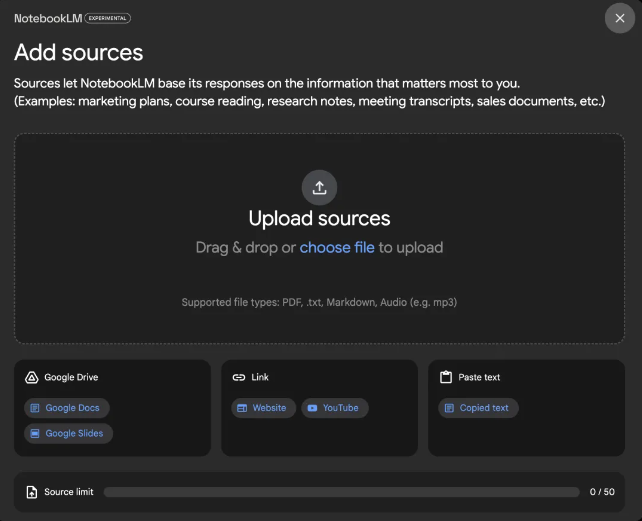In the rapidly advancing wave of artificial intelligence, Google's experimental AI product, Notebook LM, is garnering widespread attention. This app, hailed as "the next ChatGPT," is redefining how we interact with information through its powerful features and unique user experience.
The core advantage of Notebook LM lies in its document processing capabilities. Users can simply upload text, audio, or video files, and the AI quickly distills key information, even generating simulated conversational podcasts. This innovative interaction not only enhances information processing efficiency but also significantly improves the user experience.
The process of using Notebook LM is simple and intuitive. Users can upload files in various formats, including Google Docs, web links, or lengthy texts, with a maximum of 50 files supported, each limited to 500,000 words. The AI can generate content such as Q&A sessions, quizzes, tables of contents, timelines, or summaries based on user needs, and can even simulate dialogues between two AIs to produce audio content.

The robust functionality of Notebook LM stems from its underlying Gemini1.5Pro model, which supports an ultra-long context of 128k, making it capable of easily handling lengthy documents. It even surpasses OpenAI's latest version in terms of mathematical and reasoning abilities, providing strong technical support for Notebook LM to process complex information inputs.
In practical applications, Notebook LM has demonstrated extensive potential. For example, students can upload class recordings and notes, and the AI helps organize key points and even generates weekly review audio. This feature not only enhances learning efficiency but also offers new possibilities for personalized learning.
The success of Notebook LM lies in its clever resolution of the two main barriers to communication with large models: the complexity of interaction and the fatigue of information acquisition. Users only need to upload documents to easily obtain the required information through AI-generated podcasts, significantly lowering the usage threshold.
However, users have higher expectations for Notebook LM. Many hope it can process image information within documents and allow users to better guide the content of generated podcasts. These feedbacks reflect the demand for the versatility and flexibility of AI tools, pointing to the future development direction of Notebook LM.
It is worth mentioning that the developer community has already released an open-source version of Notebook LM, although currently limited to processing PDF files. This move not only showcases the enthusiasm of the tech community for emerging AI tools but also offers possibilities for the further development and optimization of Notebook LM.
Product entry: https://top.aibase.com/tool/notebooklm










